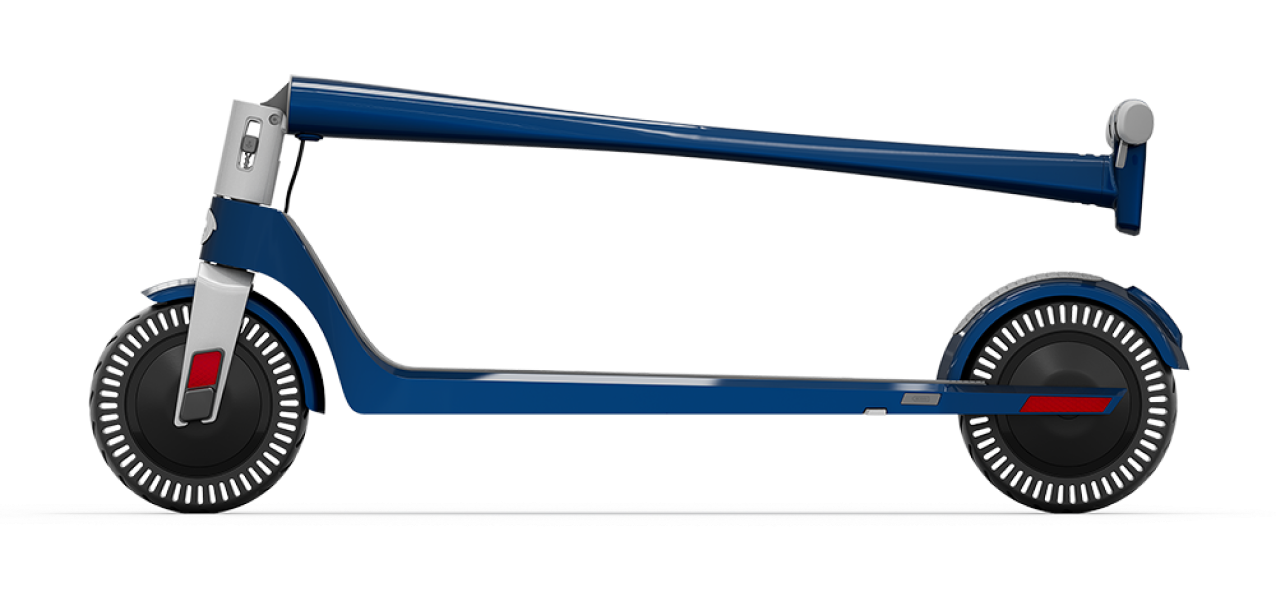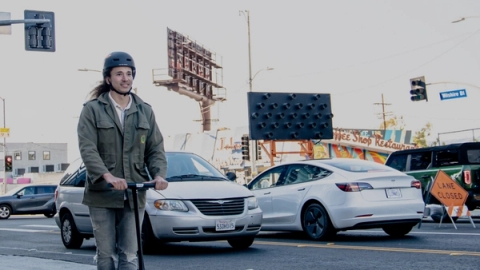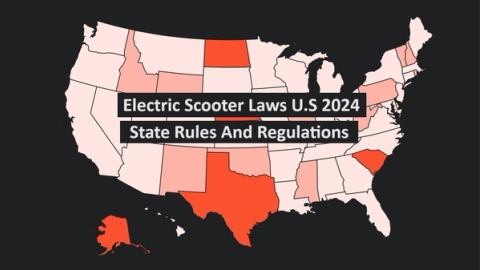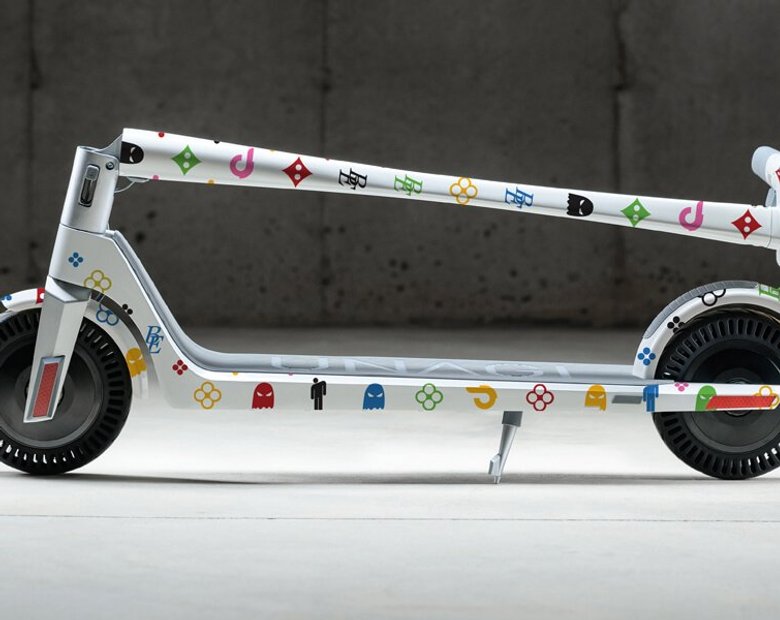Discover why I swapped my car for an Unagi Scooter! Dive into my journey from the monotony of traffic to the freedom of city streets, exploring the excitement, eco-friendliness, and simplicity of scooter life. Join the ride towards a more adventurous, sustainable urban lifestyle. Will you join me?
Exploring California's cities can be quite challenging due to its well-known car culture and the heavy traffic resulting from it, especially in major cities like Los Angeles, San Francisco, San Diego, Sacramento, and Concord.
Finding a way to navigate the endless traffic jams can greatly improve your experience, and that's why choosing an alternative method, such as a two-wheeler, to keep you off these crowded roads can be a game-changer.
In this guide, we'll take you through everything you need to know about riding an electric scooter in California, from the electric scooter laws and regulations to preparing for your journey, staying safe, and finding the best electric scooter if you don't already own one.
Additionally, we'll highlight the most picturesque routes to ensure you experience the very best of what California has to offer.
California electric scooter laws

In the early days of their integration, shared scooters in the Bay Area were a source of chaos and frustration for other road users.
Rather than resorting to a blanket ban on e-scooters, California took a proactive stance and developed a comprehensive set of regulations in California Vehicle Code § 21235 to govern their use statewide.
Here's a breakdown of some of the key California electric scooter laws to get you started (be sure to check local laws for any additional electric scooter laws):
Do you need a license to ride an e-scooter in California?
Yes, California electric scooter laws mandate that all e-scooter riders possess a valid driver's license or learner's permit to ride an electric scooter in public spaces.
The class of the driver's license (Class C, Class M, etc.) doesn't matter as long as it's a current and legally issued valid license.
What is the minimum age for e-scooter riders in California?
California electric scooter law requires riders of electric scooters to be at least 16 years old to legally operate an e-scooter, provided they hold a valid learner's permit. However, it is important to note that many electric scooter-sharing companies set their minimum age restriction for users. In most cases, these companies require riders to be at least 18 years old.
Is wearing a helmet while riding an electric scooter in California mandatory?
California has a relaxed stance on helmet laws for electric scooter riders. The state only requires riders under 18 years to wear a certified bicycle helmet while operating an e-scooter. Adult riders, however, are not legally obligated to wear helmets. Despite this, electric scooter rental companies are mandated to provide a bike helmet to the operator if requested.
Regardless of the legal requirements, it is highly recommended that all e-scooter riders, regardless of age, wear helmets whenever they take to the streets. Statistics show that most fatal electric scooter accidents involve head trauma, and a helmet can significantly reduce the severity of these injuries.
Is it legal to carry a passenger on an electric scooter in California?

California state law explicitly prohibits tandem riding on electric scooters.
Right off the bat, carrying a passenger on an electric scooter is strongly discouraged due to the significant risks and compromises it introduces. Electric scooters have weight limitations and are engineered to accommodate a single person safely. Having an additional person on board can negatively impact the scooter's frame integrity, handling, performance (potential motor strain), deck space, overall comfort, and braking ability, all of which significantly increase the risk of scooter accidents.
Can you carry items while riding an electric scooter in California?

California law does not explicitly prohibit carrying items on your electric scooter, however, there are some limitations.
The law prohibits explicitly carrying any item that would require an e-scooter rider to take both hands off the handlebars. In essence, you must always be able to maintain at least one hand on the handlebars while carrying any package.
To safely carry items, consider investing in a scooter backpack, especially if you frequently use shared scooters. For personal e-scooters, consider adding a permanent aftermarket storage solution (e.g., baskets or racks) compatible with your specific model to reduce the strain of carrying a backpack during your rides.
Are electric scooters street-legal in California?
Yes, they are.
California strongly supports micromobility and alternative forms of transportation, providing ample infrastructure for their use. As a result, there are numerous areas where you can legally ride e-scooters in the state.
Firstly, the law mandates that if a class II bike lane, trail, or bikeway is available, electric scooter riders must use these designated routes. These offer the safest riding environment, separated from vehicle traffic. However, if the local authority has jurisdiction over the bike lane and prohibits e-scooter operation by ordinance, riders must adhere to those restrictions.
In the absence of a bike lane, e-scooters can be used on roadways with a speed limit of less than 25 mph.
It is important to note that riding electric scooters on sidewalks is strictly prohibited in California. Additionally, operating an e-scooter within a system facility or parking structure of a public transportation system is considered an offense. Violators may face fines ranging from $250 to $400, community service of up to 48 hours, or even imprisonment not exceeding 90 days.
Furthermore, electric scooters are not allowed on vehicular crossings, such as bridges or toll roads, unless the D.O.T has granted a special permit.
The law further empowers the Department of Transportation and local authorities to determine where electric scooters can and cannot be operated. These local regulations are permitted, provided they do not conflict with state-wide traffic rules outlined in the California Vehicle Code.
Is it legal to ride electric scooters on sidewalks in California?
No, California law strictly prohibits riding e-scooters on sidewalks.

The only exception is when briefly crossing a sidewalk is necessary to enter or exit an adjacent property.
The rationale behind this restriction is straightforward-riding on sidewalks significantly increases the chances of collisions with pedestrians, which is a situation that should be avoided at all costs.
Can you ride a scooter on the road in California?
Yes, California law allows electric scooters on roads with speed limits of 25 mph or less.
If the speed limit is higher, a class II bicycle lane must be adjacent to that roadway for electric scooters to be permitted. Local authorities may also increase this set speed limit to 35 mph to accommodate e-scooter traffic.
However, regardless of the higher speed limit applicable to the highway, electric scooters are still required to maintain the 15 mph maximum speed restriction placed on them.
When riding on the highway, electric scooter operators must stay as close to the right-hand edge of the roadway as possible if they are moving slower than the traffic flow. Riders may, however, change their position on the road for necessary reasons such as:
- Overtaking other vehicles
- Avoiding road hazards
- Preparing to make a left turn(in which case they must dismount and walk)
- When riding on lanes too narrow for a scooter and a vehicle to travel side by side safely
On one-way streets with multiple lanes, riders may opt to ride along the left-hand curb or edge of the roadway as long as it is done safely.
What is the speed limit for electric scooters in California?
The maximum speed for electric scooters in California is set at 15 mph, regardless of where you are riding.
Legal requirements for electric scooters in California
Motorized scooters are subject to specific legal requirements that ensure they are safe for public use and classified correctly within the state's vehicle regulations. California's electric scooter laws define the fundamental characteristics an electric scooter must possess, as well as the necessary safety features to make it roadworthy.

At its core, a legal e-scooter must have two wheels, a handlebar, an electric motor, a deck for standing or a seat with footrests, a functional brake, and a throttle for acceleration. The design specifics extend to the handlebar height, which is regulated to prevent the handlebar from being so high that the rider's hands are above their shoulders when operating the scooter. This promotes a safer and more controlled riding posture.
When it comes to riding in low visibility conditions or at night, electric scooters are required to have adequate lighting and reflectors. This includes a white front lamp that illuminates the road for at least 300 feet, a red reflector on the rear that is visible from 500 feet (alternatively, the e-scooter rider can wear reflective clothing), and white and yellow reflectors on the sides of the scooter that are visible from 200 feet.
Electric scooters should not exceed 80 decibels (dBA) in terms of noise levels. Fortunately, this limit is comfortably above the typical operational noise level of most scooters, which usually emit a slight hum (around 60 dB) during operation, quieter than a vacuum cleaner. Chained drive systems may produce relatively higher sounds but remain below the 80 dB limit.
Can you get a DUI charge when riding an e-scooter in California?
The law treats e-scooters much like any other vehicle when it comes to driving under the influence (DUI). This means that if you ride an e-scooter while under the influence of alcohol (with a blood alcohol concentration (BAC) at or above 0.08) or any drugs, you are breaking the law and can face legal consequences. Individuals found riding an e-scooter under such conditions can face legal consequences, including a fine of up to $250.
However, the financial penalty shouldn't be your only concern. Operating an electric scooter under the influence puts you at a significantly higher risk of accidents and injuries, as alcohol and drugs greatly impair your coordination, judgment, reaction time, and balance.
Do you need insurance or registration for electric scooters in California?
Riding an electric scooter comes with fewer bureaucratic hurdles compared to operating a motor vehicle. Specifically, riders are exempt from insurance obligations, registration with the California DMV, and displaying a license plate.
Where to park your electric scooter in California

Whenever possible, take your electric scooter indoors with you (to your office, apartment, etc.) if permitted. Leaving your scooter outside increases the risk of theft, so if you want to own a personal everyday scooter, it's preferable to choose a lightweight, portable commuter model that you can easily carry inside and store.
Parking shared electric scooters or when unable to bring them inside
For those who use shared electric scooters or in cases where you can't bring your scooter indoors, California law deems the following places acceptable for parking:
- Designated areas for bicycle or electric scooter parking
- Near bike racks: Parking your scooter beside a bicycle rack is often a safe and acceptable choice.
- Sidewalk zones: The landscape or furniture zone of the sidewalk, where present, can be a suitable spot, provided the scooter does not hinder pedestrian movement.
When parking your electric scooter, always leave it upright to minimize its footprint and reduce the risk of tripping hazards or obstructions for other road users.
Prohibited parking areas
Always avoid:
- "Lay-Down" Parking: Never leave your parked scooter lying on its side on the sidewalk. This creates a tripping hazard and blocks the path for others.
- Red curb zones, emergency exits, and areas that block ADA access
- Emergency Access: Never block areas critical for emergency services.
- Bus Stops: Avoid parking in designated bus loading and unloading zones.
- Private property, except when permitted by the property owner
Additional tip: Invest in an electric scooter lock
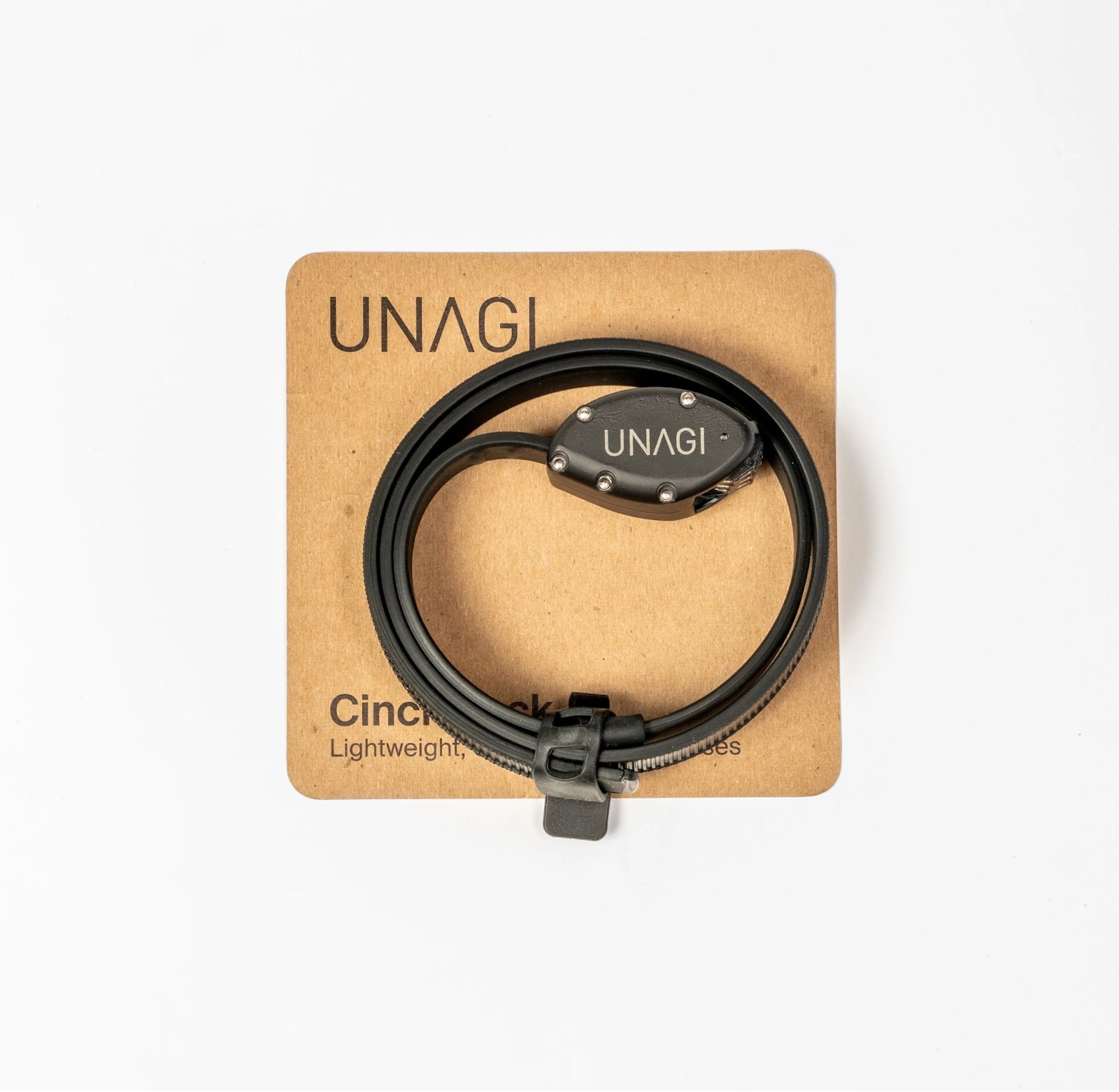
The rise of electric scooter theft in California in recent years highlights the importance of prioritizing security. If circumstances require leaving your scooter unattended outside, invest in a high-quality lock and securely fasten your scooter to a sturdy object. However, only leave your scooter outside for brief periods; for extended parking, make every effort to store it indoors.
Electric scooter options in California
California offers a variety of electric scooter options to suit different needs, budgets, and preferences. Here's a breakdown of your main options:
Rental electric scooters in California: Your go-to for casual use
Scooter rental is an excellent option for those who only need an electric scooter occasionally. California cities have numerous scooter-sharing companies, providing users with a wide range of options.
The rental process for shared electric scooters is simple and user-friendly. Download the app for your chosen scooter, complete the registration, find an available one nearby, and you're ready to ride. When you're done, pay through the app and park the scooter in the designated area.
How much does it cost to rent an electric scooter in California?
Electric scooter rental prices vary from vendor to vendor, but most companies charge an initial unlock fee (usually around $1) and then a per-minute rate ranging from $0.15 to $0.50
Electric scooter subscription in California: Ideal for longer-term needs
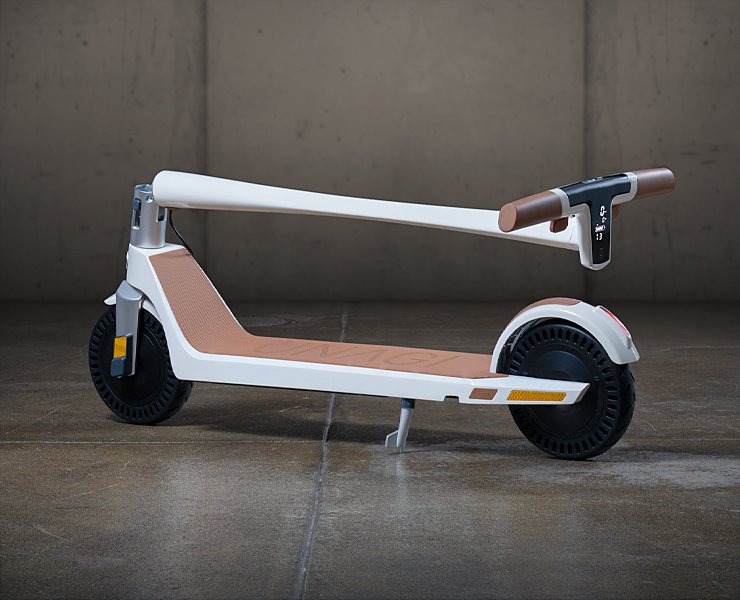
For those requiring an electric scooter for an extended period without the commitment and cost of buying one, subscription services offer an attractive solution.
UNAGI offers such a monthly subscription that provides users with unlimited access to a scooter for a set time frame, ensuring you always have a ride when you need it.
UNAGI's subscription service features two dual-motor electric scooter models: the UNAGI Model One (Basic) and the UNAGI Voyager (more powerful). Both options are lightweight and portable, weighing around 28-30 lbs, making them easy to carry and store and convenient for daily use. They are also equipped with dual motors which provide better hill-climbing capabilities compared to single-motor scooters.
Subscription Costs: The monthly subscription for the UNAGI Voyager is $79, while the Model One is $59. The subscription includes unlimited access to a clean, personal electric scooter, free express delivery within three days, comprehensive maintenance coverage with immediate replacement in case of issues, and theft insurance.
U-NITE | Unagi's SF Foodie Ride
Subscribers also gain access to the exclusive Unagi Community, which offers the opportunity to connect with other users and share experiences. As a member, you'll have the chance to participate in complimentary monthly group rides organized by UNAGI in major cities nationwide. These rides provide excellent networking opportunities and the chance to explore new places together.
If you're interested in joining these events, we have an exciting lineup of trips planned throughout California. You can find the details of these rides, including dates and locations, in our comprehensive yearly calendar.
Buying an electric scooter in California: For the committed rider
If you prefer to own your electric scooter, California has plenty of on-site dealers and online options. Major dealers like Fluidfreeride, Alien Rides, and Voro Motors have stores within the state where you can test-ride scooters for free and receive expert advice tailored to the local area. They also offer the best warranties.
When choosing an e-scooter, always opt for a dual-motor model to tackle the hills in most California cities. Single-motor scooters may struggle with even the mildest inclines. However, while dual-motor scooters are recommended, they do come at a higher cost, starting at around $1,000.
If your budget is under $400, consider the electric scooter subscription option or renting a dual-motor scooter instead of purchasing an underpowered single-motor scooter. Alternatively, you could explore the second-hand market for budget-friendly options, though it comes with the usual caveats of pre-owned items.
Scenic routes to explore on your electric scooter in California
California has an abundance of bike lanes and trails, meaning you'll never run out of options, but let's highlight some must-visit destinations that you won't want to miss.
San Francisco Bay area: Crissy Field to Sausalito
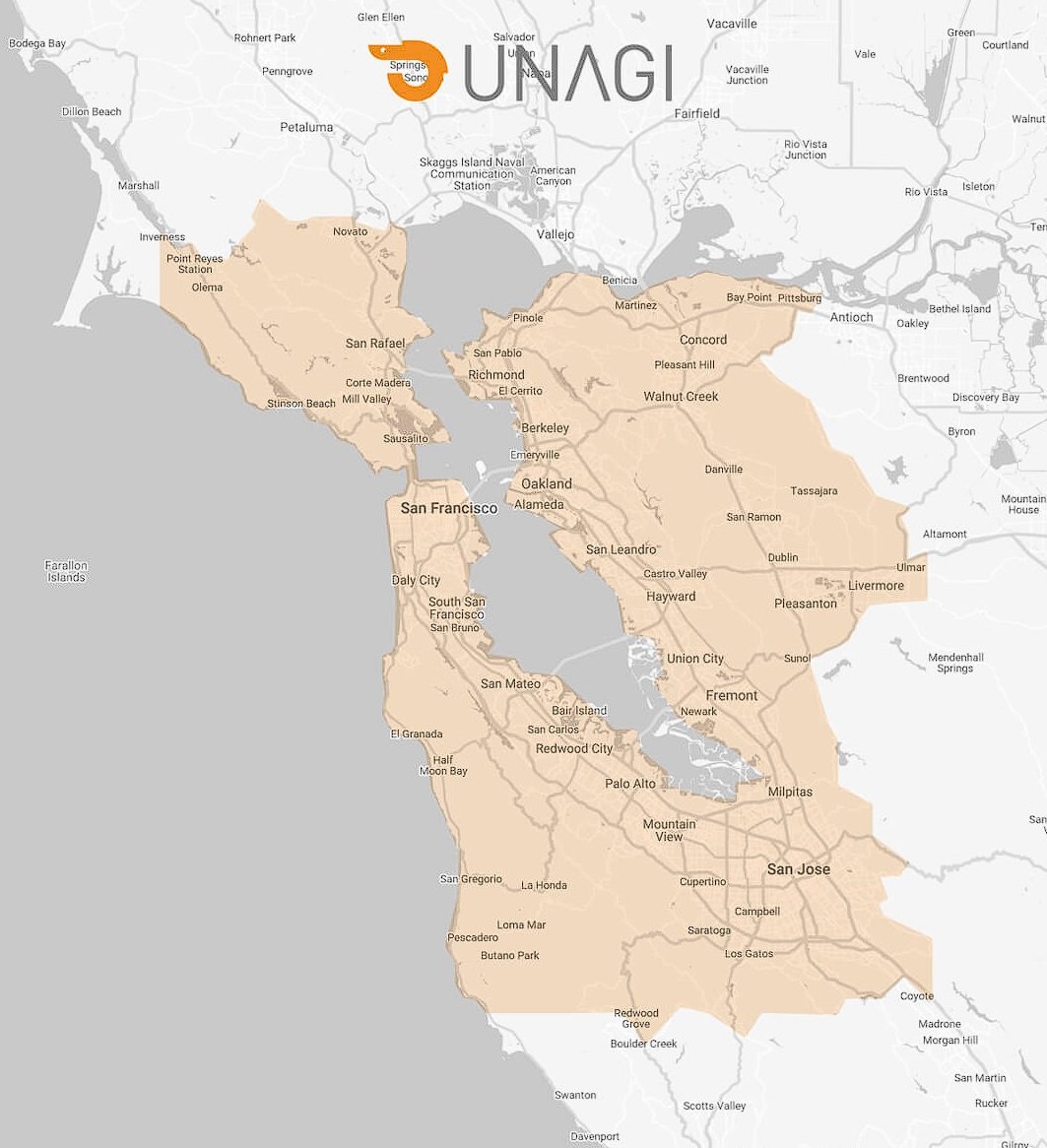
The ride from Crissy Field to Sausalito is a popular and scenic route in the San Francisco Bay Area, offering stunning views of the Golden Gate Bridge, Alcatraz Island, and the San Francisco skyline. This route is approximately 8 miles one-way, and features paved pedestrian and bicycle paths, such as the Battery E trail and the San Francisco Bay Trail. However, e-scooter riders should be prepared for steep inclines, heavy traffic on the Golden Gate Bridge, and potentially strong winds and fog, especially during the summer months. Remember to bring plenty of water, snacks, and sunscreen.
For a more comprehensive tour, start at Fisherman's Wharf and make your way to Sausalito. The trail will pass through notable and iconic areas, including Ghirardelli Square, Fort Mason, the Marina, and the Palace of Fine Arts.
As you pass through Crissy Field, a former military airfield turned waterfront park, head east along the Golden Gate Promenade, a wide, paved path that runs along the northern shore of San Francisco. The bicycle lane offers excellent views of the Golden Gate Bridge and the Marin Headlands, as well as opportunities to spot wildlife such as seabirds and harbor seals. Continue via the San Francisco Bay Trail for more stunning views.
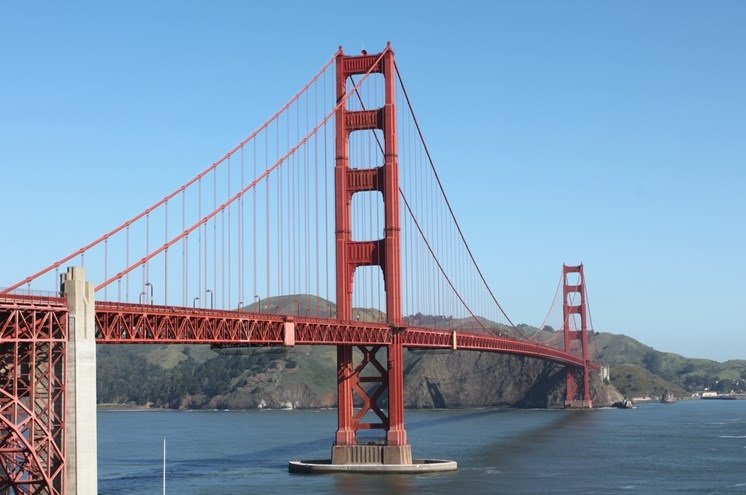
Source: Golden Gate Bridge
As you approach the Golden Gate Bridge, you'll have the option to take a short detour to Fort Point, a historic Civil War-era fortress located directly beneath the southern end of the bridge, before turning back to make the short climb to the bridge. There's a bit of a hill when going up towards the bridge, so if it's too steep, you may want to walk and save on battery life.
From there, riders will cross the iconic Golden Gate Bridge itself, a 1.7-mile span that offers breathtaking views of the San Francisco Bay and the Pacific Ocean. Once you're on the bridge, you're not allowed to use the electric motor, so you'll have to push the e-scooter across.
After crossing the bridge, riders will descend into the charming town of Sausalito, a seaside community known for its art galleries, boutiques, and waterfront restaurants. Along the way, riders will pass by several notable landmarks, including the Lime Point Historic Lighthouse, the Bay Area Discovery Museum, and the Sausalito Yacht Harbor.
For the return trip, you have several options. You can either ride back across the Golden Gate Bridge to San Francisco or take a ferry from Sausalito to the San Francisco Ferry Building or Pier 41.
If you have time and range, you can also check out the Marin Headlands area (around 4-5 miles from the Bridge), which has well-marked roads, unique geology, and other natural attractions and historic structures. The trail also has several old war-time battery locations, military fortifications, and gun placements, making it great for history buffs and a fantastic place for photos. If you're still in the spirit of adventure, you can go further to check out Point Bonita Lighthouse, which is another 3.5 miles. So, you better have a scooter with excellent range and the power to tackle the inclines.
Woodbridge trail: A scenic lakeside loop
The Woodbridge Trail, a scooter-friendly path, surrounds the man-made North Lake in the Woodbridge neighborhood of Irvine. This 1.7-mile trail offers a flat and scenic route with stunning visuals. The estimated grade is mostly gentle, with only a few gentle to moderate inclines (5-12%).
The trail winds around the lake's perimeter, providing breathtaking views of the water and the surrounding landscape. Lush greenery, including trees and shrubs, lines the path, offering shade and a sense of tranquility. Riders can enjoy the sight of the lake's fountain, which creates a beautiful water display, and observe various bird species that call the lake home, such as ducks and geese. The trail also offers glimpses of diverse wildlife, including rabbits and turtles.
Connected to the larger Irvine bicycle trail network, the North Lake trail allows riders to extend their adventures beyond the lake loop. The nearby San Diego Creek Trail and Freeway Trail provide additional opportunities for exploration and longer rides.
One of the unique features of the North Lake trail is the bridge that crosses over the lake. This bridge, along with a gazebo, offers stunning views of the lake and adds a fun and interesting element to the riding experience.
Along the trail, several benches and seating areas are available for riders to take a break, relax, and enjoy the scenery. Restroom facilities and water fountains can be found at nearby parks, such as Mike Ward Community Park and Fallbrook Park.
Long Beach Shoreline Bike Path
The Shoreline Pedestrian Bike Path, also known as the Long Beach Bike Path, is a multi-use trail that runs along the Long Beach coastline, stretching from Parkers' Lighthouse (Shoreline Village) to the Belmont Shore neighborhood. This smoothly paved, relatively flat route offers stunning views of the Pacific Ocean, the Long Beach skyline, and the famous Queen Mary ship. The trail also has separate bike and pedestrian paths, ensuring a comfortable and safe riding experience for all users.
Starting from Shoreline Village, a popular waterfront shopping and dining destination, the bike lane heads west along the beach, passing by several notable landmarks, including the Long Beach Convention Center, the Aquarium of the Pacific, and the Rainbow Harbor Marina.
As you continue along the path, you'll enjoy breathtaking views of the ocean and the sandy beaches that line the shore. The route also passes by several parks and green spaces, including Belmont Shore and Junipero Beach Park, which offer opportunities for picnicking, relaxation, and beach access.
One of the highlights of the path is the section that runs alongside the historic Queen Mary ship. The Queen Mary is a retired ocean liner that now serves as a hotel, museum, and event space.
As the path approaches the Belmont Shore neighborhood, riders will find a variety of shops, cafes, and restaurants that cater to the area's vibrant beach culture. The path provides direct access to the city's popular Belmont Veterans Memorial Pier, a favorite spot for fishing, sightseeing, and watching the sunset.
While the official path ends at the Belmont Veterans Memorial Pier, adventurous riders might want to continue to Alamitos Park at the end of the Alamitos Peninsula, where they can enjoy even more stunning ocean views.
Los Angeles River Bike Path (LARIO)
The Los Angeles River trail, often referred to as the LARIO Trail, is a project in progress, running along the Los Angeles River and Rio Hondo Channel. The trail extends from Owensmouth Ave. (Canoga Park) to 401 Golden Shore (Long Beach).
The path is primarily paved with appropriate mile markers and signage. However, some sections are not as well-maintained, and riders will occasionally encounter homeless encampments scattered throughout the route. The local authorities periodically clear them out.
The trail may also not offer the most scenic views; for most of the journey, you'll be riding alongside concrete embankments, the river, and along highways. However, some sections of the trail feature unique art installations, graffiti, and murals that add visual interest to the experience.
Along the way, riders will pass by several parks, including Beilenson Park/Lake Balboa Park, Griffith Park, Sunnynook River Park, and Rattlesnake Park. Other notable landmarks along the route include Elysian Park, the Baum bicycle bridge, and various riverfront parks. These spots serve as pleasant rest areas equipped with benches and water fountains.
A significant advantage of the LARIO Trail is its integration with the broader Los Angeles biking and public transportation network. The bikeway is metro-accessible, making it easy for riders to combine their electric scooter rides with public transit. It also links to other notable bike paths, like the Orange Line Bike Path and the Rio Hondo River Trail, offering electric scooter riders the opportunity to extend their journeys or explore different areas of the city.
San Gabriel River Bike Trail
The San Gabriel River Trail is a 35.4-mile paved multi-use trail that stretches from Azusa in the north to Seal Beach in the south. The trail follows the channelized San Gabriel River, passing through diverse landscapes, including suburban backdrops, adjacent parks, and scenic mountain views, culminating in a beachside finale.
Key points along the route include:
- Santa Fe Dam Recreation Area: This large open area features a nature center and a reservoir, providing a scenic backdrop for riders.
- Whittier Narrows: A natural expanse with a nature center, offering various amenities
- Pío Pico State Historic Park: Home to adobe buildings and a rich history from the Mexican-American War era, this park offers a unique cultural experience along the trail.
- Santa Fe Springs Park: Located at the trail's midpoint, this park provides essential amenities for riders, including rest areas, water fountains, and bathrooms.
- El Dorado East Regional Park (Long Beach): This park offers a wide range of recreational facilities and diverse amenities, including an archery range and fishing lakes, making it an ideal spot for a break or a post-ride activity.
- River's End Park (Seal Beach): Marking the southern endpoint of the trail near the river mouth, this park provides a perfect opportunity for riders to enjoy the coastal atmosphere and take in the stunning views of the Pacific Ocean.
Venice to Santa Monica (Marvin Braude Bike Trail)
The Marvin Braude bike trail, also known as The Strand, is a popular and iconic route that runs along the Pacific coastline. Stretching approximately 22 miles from Will Rogers State Beach (Santa Monica Mountain) down south to Torrance County Beach. The Marvin Braude Bike Trail is well-maintained and relatively flat, making it suitable for most e-scooters. However, it's worth noting that the path can become crowded during weekends and holidays.
Starting at the northern end, Will Rogers State Beach draws visitors for its swimming, sunbathing, and volleyball activities, set against a backdrop of stunning cliffs and luxurious beachfront properties.
Continuing south, you'll encounter a series of iconic landmarks and vibrant beachside communities. The world-famous Santa Monica Pier, with its amusement park and lively atmosphere, marks the first major stop on your journey. From there, proceed to Venice Boardwalk, where street performers, artists, and vendors create a tapestry of sights and sounds. As you cruise further along the trail, you'll pass by the peaceful Venice Fishing Pier, canals, and the picturesque Marina del Rey, where trail users can connect to the Ballona Creek Bike Path.
The route also takes you through several beachside communities: Manhattan Beach, Hermosa Beach, and Dockweiler State Beach, which offers stunning views of the Los Angeles International Airport.
The final miles of the trail through South Bay have a slightly more industrial feel, passing by the Los Angeles International Airport, Water and Power Plant, oil refineries, and residential buildings. The Marvin Braude Bike Trail concludes in the city of Torrance, where riders can take a moment to reflect on their journey and possibly spot whales or dolphins at Redondo Beach.
The path is also well-connected to public transportation, with several Metro Expo Line stations and bus stops nearby, making it easy for electric scooter riders to access the trail using various modes of transportation.
Monterey Bay Coastal Recreation Trail
The Monterey Bay Coastal Recreation Trail is an 18-mile paved path that runs along the coast of Monterey Bay, from Castroville in the north to Lover's Point Park in the south. Considered one of California's most scenic long trails, it offers breathtaking views of the Pacific Ocean. The trail follows the former Southern Pacific Railroad route, which was converted into a recreational path in the 1980s.
The Monterey Bay Coastal Recreation Trail is well-maintained, easy to navigate, and relatively flat, with only slight inclines. There are plenty of places to stop and explore along the way, as many of the top attractions in the area are located along this route. However, it's important to note that the trail is quite long, and once you leave the major towns, there are limited food and water resources available, so it's essential to pack accordingly. The trail can also be a bit windy at times.
Starting from the northern end in Castroville, the trail passes through the city of Marina, where riders can take a short detour to visit the Fort Ord Dunes State Park, a former military base turned nature reserve.
As you continue south, the trail offers stunning views of the Monterey Bay National Marine Sanctuary, a federally protected area home to a diverse array of marine life, including sea otters, harbor seals, and migrating whales. Along the way, you'll pass by several historic sites, such as the Cannery Row waterfront district, an area made famous by John Steinbeck, featuring numerous restaurants, shops, lodging options, and entertainment venues. The world-renowned Monterey Bay Aquarium, a premier marine research and education institution, is also located along the trail.
The trail then winds through the towns of Pacific Grove before reaching its southern terminus at Lovers Point Park. Other notable attractions along the route include Fisherman's Wharf, which offers restaurants, shops, and scenic ocean views and is considered the most scenic section of the trail. You'll also encounter the Coast Guard Pier, the historic Point Pinos Lighthouse, Del Monte Beach, Monterey State Beach, and San Carlos Beach, a popular spot for scuba divers.
The Monterey Bay Coastal Recreation Trail is part of the larger Monterey Bay Sanctuary Scenic Trail Network, a planned 50-mile continuous trail that will eventually connect the cities of Santa Cruz and Monterey.
Jedediah Smith Memorial Trail
The American River Parkway, also known as the Jedediah Smith Memorial Trail, is a 32-mile long paved multi-use trail that runs along the American River, offering scenic views of the river and the surrounding foothills.
The trail begins at Discovery Park in Old Sacramento, located at the confluence of the American and Sacramento Rivers, and extends northeastward to Folsom Lake, passing through several parks, natural areas, and riverfront communities along the way.
Notable features and highlights of the American River Parkway include:
- Discovery Park: This 302-acre park serves as the starting point of the trail and offers boat launches, picnic areas, and a large playground.
- California State University, Sacramento (CSUS): The trail runs along the southern edge of the CSUS campus, providing access to the university's scenic grounds and facilities.
- Guy West Bridge: This iconic pedestrian bridge, a miniature replica of the Golden Gate Bridge, connects the trail to the CSUS campus. Other notable bridges along the trail include the Fair Oaks Bridge, a historic truss bridge built in the early 1900s, and the Harold Richey Memorial Bridge.
- Effie Yeaw Nature Center: Located in Ancil Hoffman Park, this nature center offers educational exhibits, guided tours, and bird and wildlife viewing opportunities.
- Lake Natoma: As the trail approaches Folsom, it skirts the southern shore of Lake Natoma, a popular spot for fishing, kayaking, and other water sports.
- Folsom Lake State Recreation Area: The trail ends at Beal's Point, a popular beach and picnic area on the western shore of Folsom Lake.
The American River Parkway features a fully paved asphalt two-lane trail that is smooth and mostly level, with gentle terrain and a few rolling sections. The trail is well-maintained and includes mile markers, trailside maps, restrooms, water fountains, and interpretive signage. However, like many long trails in urban areas, there are several homeless camps set up along the route, particularly around Discovery Park.
Pacific Coast Highway, California
For confident and adventurous electric scooter riders looking for a more intense and longer tour, the Pacific Coast Highway (PCH) offers an unforgettable experience. While the PCH itself primarily caters to vehicular traffic, numerous bike lanes and designated routes run parallel with the highway, offering riders a safer and equally scenic experience.
One notable bike route is the Pacific Coast Bicycle Route (PCBR), which closely follows the PCH for much of its length. The California portion of the PCBR is approximately 1,000 miles long, starting at the California-Oregon border and ending at the California-Mexico border.
You can explore sections of it or plan a longer trip. For example, you could set out from Orange County (Dana Point) and ride up to San Francisco. This route will allow you to see most of the notable sights along the way, but remember that completing this journey will take several days on an electric scooter.
Along the route, riders can expect to encounter:
- Stunning coastal scenery: Rocky cliffs, sandy beaches, and the vast expanse of the Pacific Ocean will provide a breathtaking backdrop for your journey.
- Big Sur: Make sure to check out this rugged and scenic stretch of coastline, known for its dramatic cliffs and unspoiled beauty.
- Major cities and towns: You'll pass through or near several major cities and towns, including San Francisco, Mendocino, Santa Barbara, Santa Cruz, San Luis Obispo, Monterey, Carmel, and Los Angeles, providing ample opportunities to explore local attractions.
When planning your e-scooter trip along the Pacific Coast Highway, it's essential to remember the limitations of your scooter's range and the availability of charging points along the way. Make sure to plan your route carefully, taking into account the distance between towns and the location of accommodations.
Additionally, riders should be prepared for varied road conditions, including steep hills, narrow shoulders, and heavy traffic in some areas.
Bayshore Bikeway, San Diego
The Bayshore Bikeway is a scenic, 24-mile route showcasing San Diego Bay's beauty and surrounding communities. The trail is a combination of dedicated bicycle paths with on-street section. Along the way, you'll have plenty of opportunities to stop at local restaurants, cafes, and attractions such as:
- Breathtaking vistas of the San Diego Bay, Coronado Bridge, and the city skyline.
- Parks and natural reserves: Visit Chula Vista, Bayfront Park, Silver Strand State Beach, Glorietta Bay Park, and the San Diego Bay National Wildlife Refuge (a 3,900-acre wetland). These spaces provide opportunities for picnicking, birdwatching, and exploring the region's diverse ecosystems.
- Marinas and harbors: The bikeway passes various marinas where you can see a wide array of boats and yachts. Notable stops include the Chula Vista Marina and the Coronado Cays Yacht Club.
- Urban waterfronts: Experience the vibrant atmosphere of San Diego's waterfront districts, including the Embarcadero and Seaport Village.
- Military history: Ride past the US Naval Amphibious Base Coronado and the Silver Strand Training Complex, which are important military installations.
- Coronado: A tied island community known for its beautiful beaches and the historic Hotel del Coronado, a Victorian-era beachfront resort that has hosted countless celebrities and dignitaries since its opening in 1888.
- Imperial Beach: The southernmost beach city in San Diego County, known for its fishing pier, surf spots, migratory birds, and salt marsh restoration efforts.
- Chicano Park murals: Near the Coronado Bridge, the route passes by a collection of murals celebrating the heritage and culture of San Diego's oldest Mexican-American neighborhood.
While the ride is mostly flat, it is quite lengthy, and there is little to no shade along the trail. As such, Bring sunscreen, a hat, and enough water. The route can also be very windy at times, making the ride a little bit tougher. Time your ride for late afternoon, as this route offers some of the best sunset views in the area.
Griffith Park, Los Angeles

Griffith Park, spanning over 4,200 acres, is home to a network of trails and roads that lead to the iconic Griffith Observatory. While the Griffith Park Loop is generally considered a beginner-friendly route, it's important to note that the course features several sharp corners and increasingly steep inclines, which may present challenges for some e-scooters.
From certain vantage points along the route, riders can see the iconic Hollywood Sign, the Griffith Observatory, and the sprawling Los Angeles skyline, providing a unique perspective on the city's famous landmarks.
The various routes within the park also pass by several notable attractions, such as:
- Los Angeles Zoo: Home to thousands of animal, bird, and plant species.
- Fern Dell Natural Springs: A lush, tranquil oasis featuring cascading streams and native plant species.
- Autry Museum of the American West: A museum dedicated to exploring the rich history and diverse cultures of the American West.
- Travel Town Railroad Museum: An outdoor museum showcasing historic locomotives and railroad memorabilia.
- Wilson and Harding Golf Courses: Two scenic golf courses nestled within the park's natural surroundings.
- Greek Theatre: An iconic outdoor amphitheater that hosts concerts and performances.
These points of interest offer electric scooter riders the chance to take a break, explore the park's cultural offerings, and refuel before continuing their journey. The numerous rest areas, picnic spots, and scenic viewpoints scattered throughout the park also provide opportunities for riders to relax and enjoy the natural beauty of Griffith Park.
OC loop
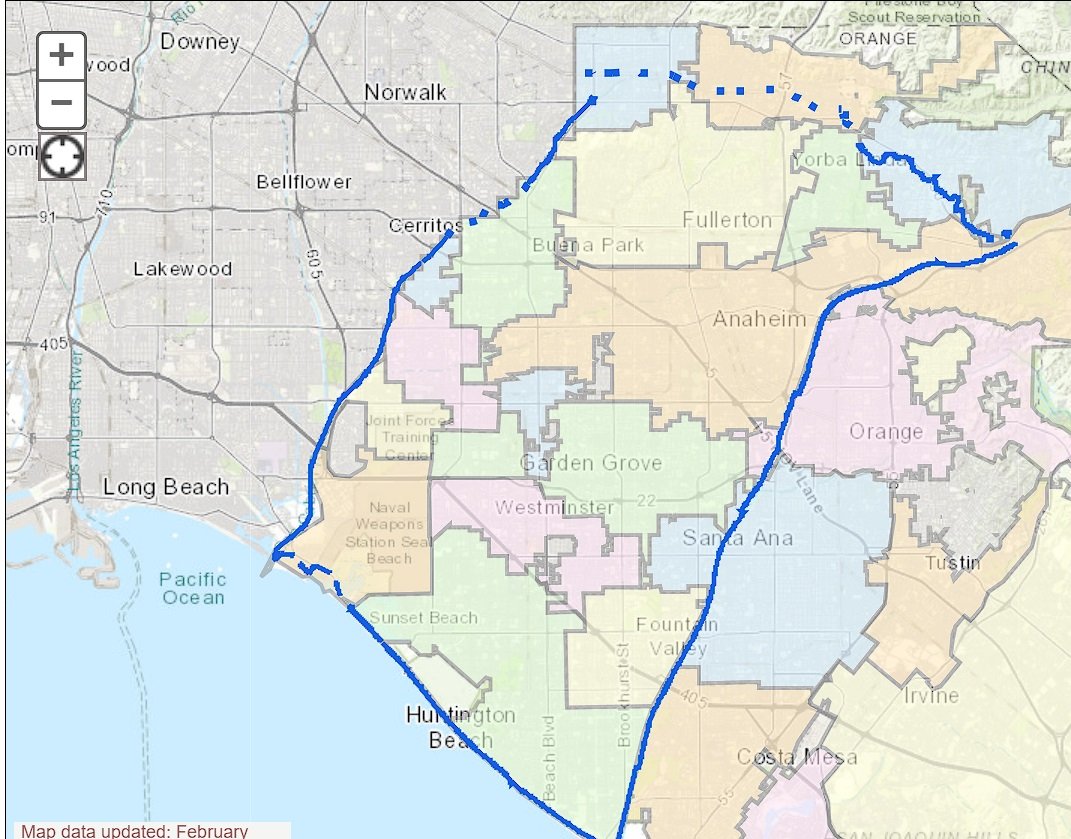
The OC Loop, short for the Orange County Loop, is a popular route that spans approximately 66 miles and connects several cities and landmarks throughout Orange County, California. This extensive route offers e-scooter riders a mix of urban landscapes, river pathways, and stretches of iconic California coastline. The OC Loop is made up of several main segments, including the San Gabriel River Bike Path, Coyote Creek Bikeway, Coastal/Beach Trail, El Cajon Bikeway, Union Pacific RR Bikeway, and Santa Ana River Trail.
These paths are connected, creating a complete loop that takes riders through 17 cities, including Seal Beach, Brea, Santa Ana, Anaheim, Fullerton, Buena Park, and Huntington Beach. There are also numerous opportunities to stop and explore local attractions, including:
- Anaheim Packing District: A vibrant food and entertainment hall in a refurbished 1919 citrus-packing house.
- Honda Center: A major sports and entertainment venue that hosts concerts and is home to the Anaheim Ducks NHL team.
- Angel Stadium: The home stadium of the Los Angeles Angels MLB team, offering tours and special events.
- Huntington Beach Pier: An iconic landmark and popular spot for fishing, surfing, and people-watching.
- Seal Beach National Wildlife Refuge: A coastal sanctuary that protects endangered species and provides opportunities for birdwatching and nature appreciation.
Be aware that this ride is long and features varying conditions along the route. Some sections present more challenging terrain, coastal sections can be windy, some inland stretches might feel more exposed during hot weather, and certain sections require riding on city streets.
E-Scooter Regulations on California Trails
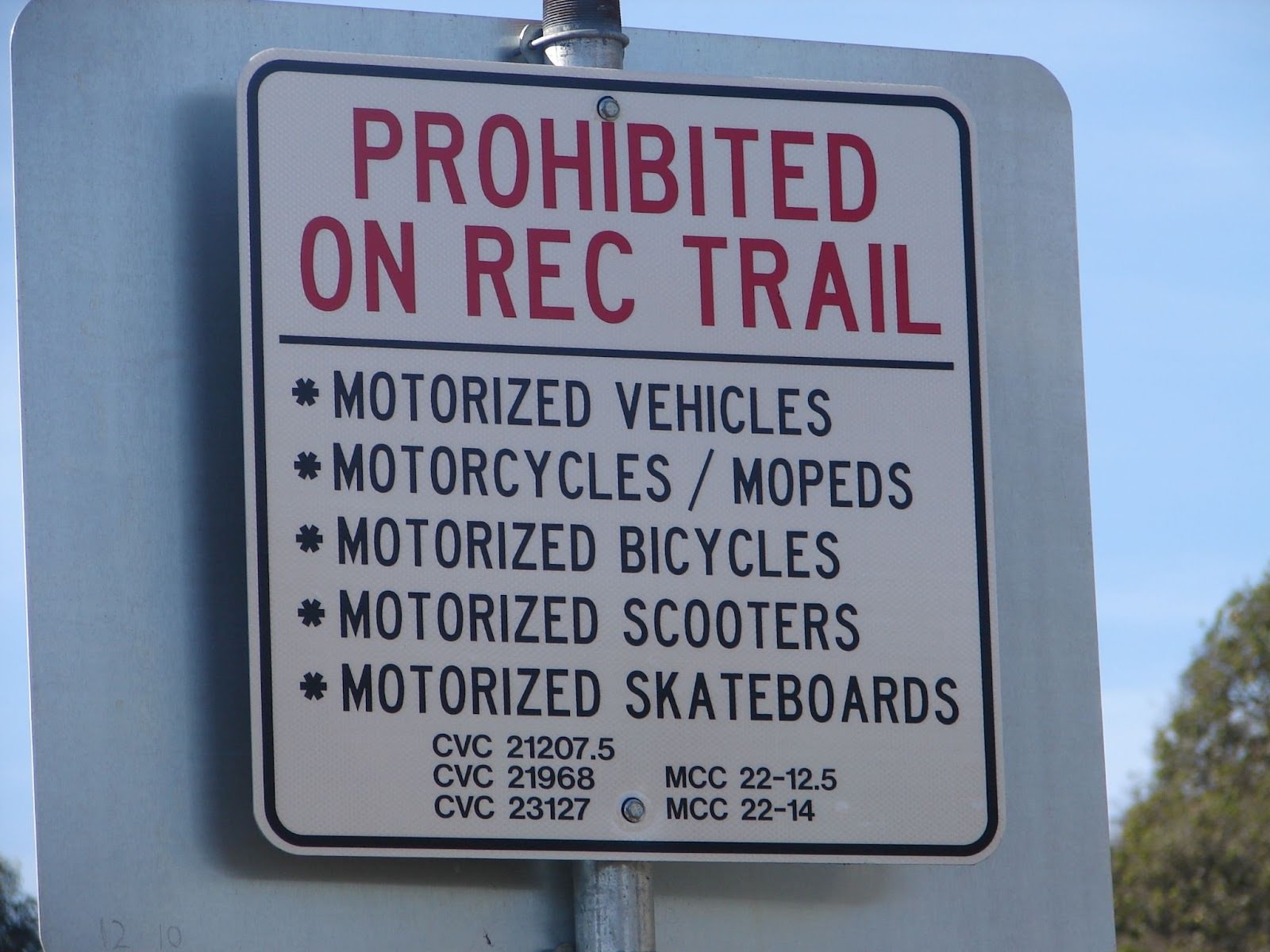
It's important to note that while California is generally quite liberal with its e-scooter laws, riders should still exercise caution and always check the specific regulations for each trail they plan to ride on. Many trails accept bicycles but may not be clear on their stance regarding electric scooters, and some may even ban them outright.
For example, you may encounter some issues on the Santa Ana River Trail, even though e-bikes are permitted. Similarly, Orange County seems to have a blanket ban on electric scooters on all of its recreational trails. The East Bay Parks District also has restrictions on electric scooters, prohibiting their use on unpaved trails, within the district's jurisdiction.
When in doubt, it's always best to err on the side of caution and respect any posted signs or regulations prohibiting electric scooters on specific trails.
Final words of advice

When planning your journey, it’s important to use tools like Google Maps and Google Street View, which offers a bike route feature to show the most scooter-friendly paths. This can help you avoid unexpectedly busy or dangerous roads. When choosing your route, opt for paths with dedicated bike lanes and quieter residential areas with frequent stop signs, as these tend to be safer due to lower traffic speeds and fewer interactions with motor vehicles.
Prioritizing your safety should always be your top concern, too. Always wear a high-quality bicycle helmet, and for those who plan to ride frequently on roads, consider a motorcycle helmet with a face shield and chin guard. Additionally, protect yourself by wearing gloves, knee pads, and elbow guards, which can help minimize the risk of road rash in a scooter accident. Carrying water and a small first aid kit is also wise, particularly when embarking on longer trips.

Read more.

Read more.

Read more.

Read more.

Read more.

Read more.

Read more.

Read more.

Read more.

“Is my scooter legal?” is a question many are increasingly asking. The micromobility industry is one of the fastest-growing and most exciting in the world—with promises for...in addition to abundances of the basics of time and money savings. And with this pace of innovation comes a struggle for regulation to keep up.
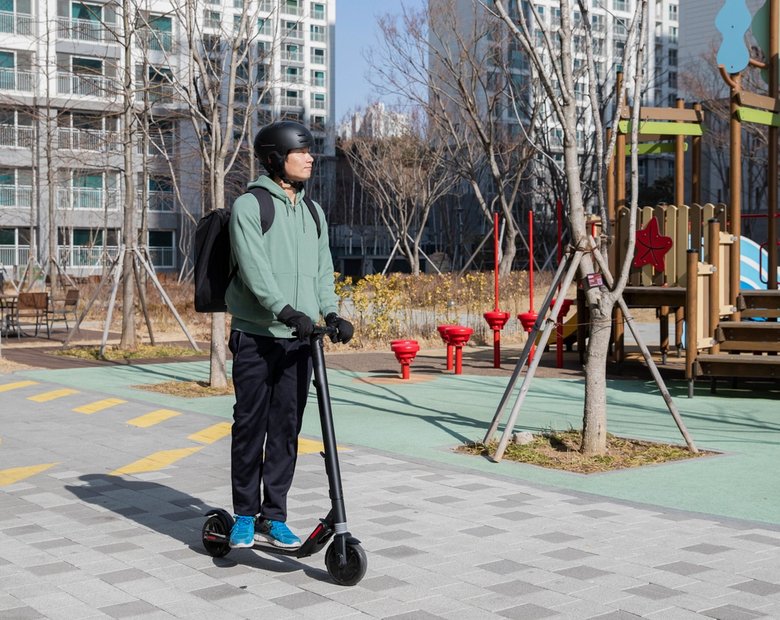
So, you're thinking about joining the electric scooter revolution, huh? You've seen those sleek and stylish scooters zipping around town, effortlessly gliding through traffic, and you can't help but wonder: Are electric scooters easy to ride?
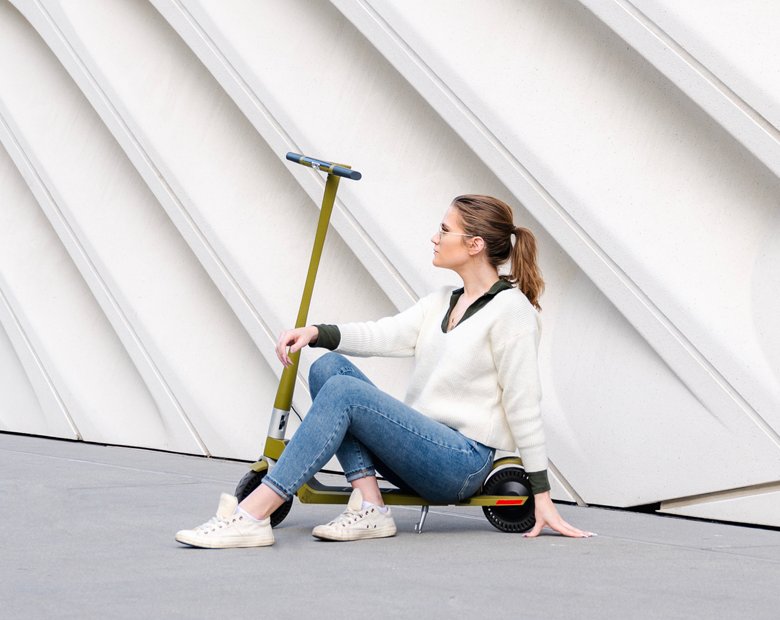
In this guide, we'll break down what defines a lightweight electric scooter, why you should choose one, and the top features you should look for.
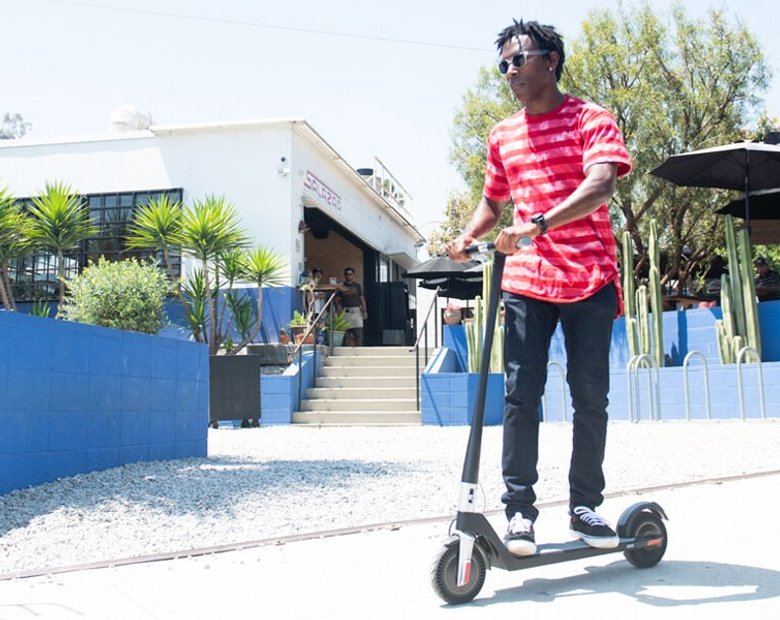
Want to get the most out of your electric scooter battery and extend your riding adventures? We've got you covered with our comprehensive guide full of maintenance tips and best practices.


*Disclaimer: Unagi, INC. has used best efforts, but does not in any manner guarantee the accuracy of the below findings regarding electric scooter laws in the United States or internationally. Electric scooter riders or those considering to purchase or begin…

It’s beyond question that we must drastically reduce carbon emissions in the coming years to head off the worst effects of climate change. How we do that has been a matter of considerably drawn-out debate. As individuals, it can be…

If you're considering riding an electric scooter for the daily urban commute - or even just for recreation - this article will give you the lowdown on getting insurance for an electric scooter.

In many regions, there's a clear restriction against riding electric scooters on the road, with the rules steering their use towards designated areas such as bicycle lanes, multi-use paths, and shared street paths.

The basis and the premise of my work is that we either operate out of love or we operate out of fear...Time is currency. The coolest thing about the scooters is that it's really quick, and it goes uphill. From there, traveling more efficiently and having a good time doing it--I think that's the most important thing.

Cynthia Leu has a full plate. A tech worker by day, Cynthia spends her off time balancing the parallel lives of a powerlifter, entrepreneur, mental health advocate, and more. Riding Unagi helps this USMC veteran cut down on everyday…
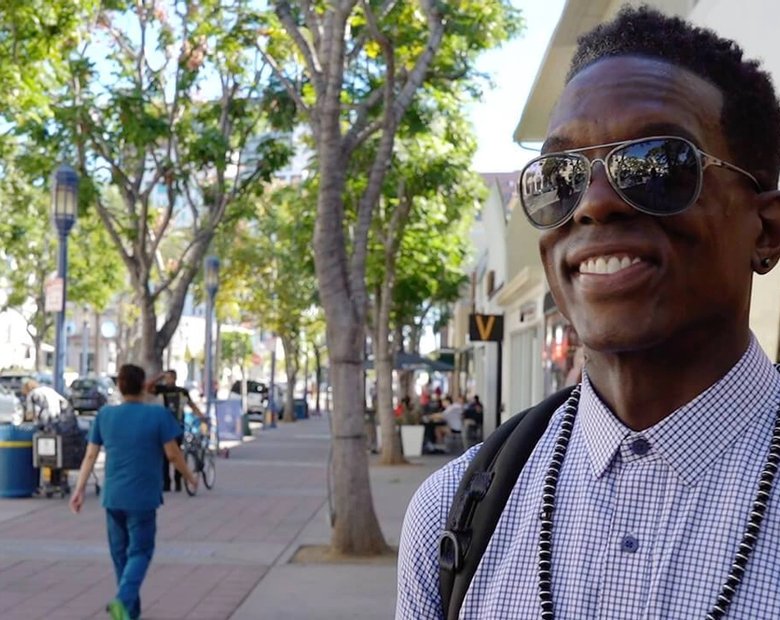
https://www.youtube.com/watch?v=7m2hVBE62LY Rasheed Muhammad is sick of Los Angeles traffic. In order to preserve his sanity, Rasheed has traded his everyday driving habit for the portable and beautiful Unagi Model One. It’s an essential accessory for navigating LA streets -- and…

Rich Lee, Co-Founder of San Francisco’s SPRO Coffee Lab, wants to share his love for coffee with the world. He depends on riding Unagi to avoid the hassle of navigating the parking crunch in the booming Mission Bay neighborhood.…


